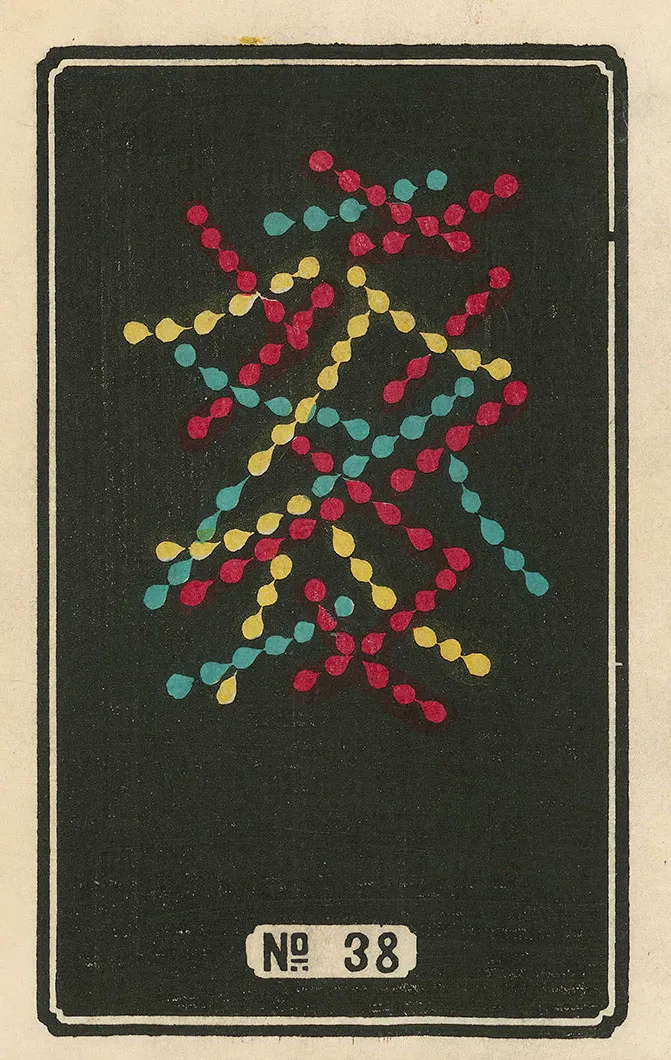In partnership with MiCodmc, a selection of establishments ripe for discovery during the 63rd edition of the Salone del Mobile.Milano, from 8th to 13th April

A publishing surprise: a reproduction of a restored catalogue drawn up by Jinta Hirayama, a leading Japanese entrepreneur who made his mark on the history of pyrotechnic art. A contemporary graphic exercise dated 1883.

We’re all instantly transported by fireworks, back to those magical childhood nights in which the sky lit up with brightly coloured joy, a feeling also evoked by Aoi Huber Kono, the artist, collaborator - and, as of 1962, wife of the Swiss graphic designer Max Huber. Her childhood memory of when she and her grandmother created “simple slips of very thin twisted multicoloured paper, forming a sort of stick about twenty centimetres long, and containing a small amount of gunpowder,” brings this unusual book to a close. These are senko hanabi, the “small, poetic pyrotechnical spectacles” that play out in a progression of five figures created as the sparks rain down: a bud, a peony, a pine needle, a willow and a chrysanthemum.
Although it might seem impossible to reproduce that sudden pyrotechnical explosion on paper, the pages of a memorable late 19th century catalogue show that it can indeed be done. The primary function of the little book by Jinta Hirayama, published in 1883, was to show clients of the Hirayama Fireworks Company, the variety and originality of pyrotechnic productions, which thanks to his know-how, managed to introduce major technical innovations that sparked a whole new expressive vocabulary: rather than just the more usual orange, he described a comprehensive palette of bright colours. It was a perfect illustrated catalogue, containing copious instructions for the user. Jinta Hirayama, who died in 1900, made history both as the organiser of a firework display welcoming the American President Ulysses S. Grant to Japan, and as the first Japanese person to register a patent in the United States. His clients came from all over the place, to the point where his catalogues were bilingual, published in Japanese and in English. Nowadays, though, those 100 numbered illustrations – seen here post-restoration – can largely be read as rigorous, elegant graphic marks on a background as dark as night, as well as testimonies of a long-gone era. A kaleidoscope of shapes and colours reminiscent of arcanely symbolic playing cards or tarot cards from an era impossible to pigeon-hole. Page by page, and flower by flower, the images seem to point to the etymology of the word - translated literally, Hanabi (firework) means ‘flowers of fire’.
Title: Fuochi d’Artificio
Illustrated Catalogue: Jinta Hirayama
Text: Aoi Huber Kono
Published by: Lazy Dog Press
Published: 2021
Pages: 96
Language: Italian


 Stories
Stories



















